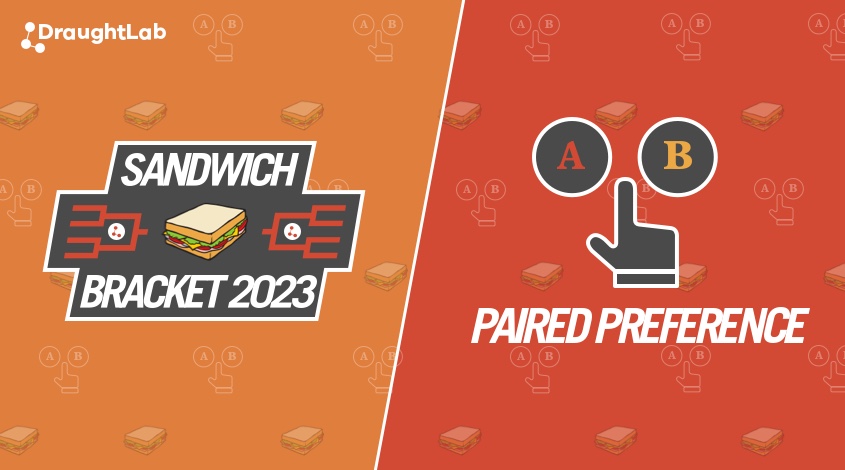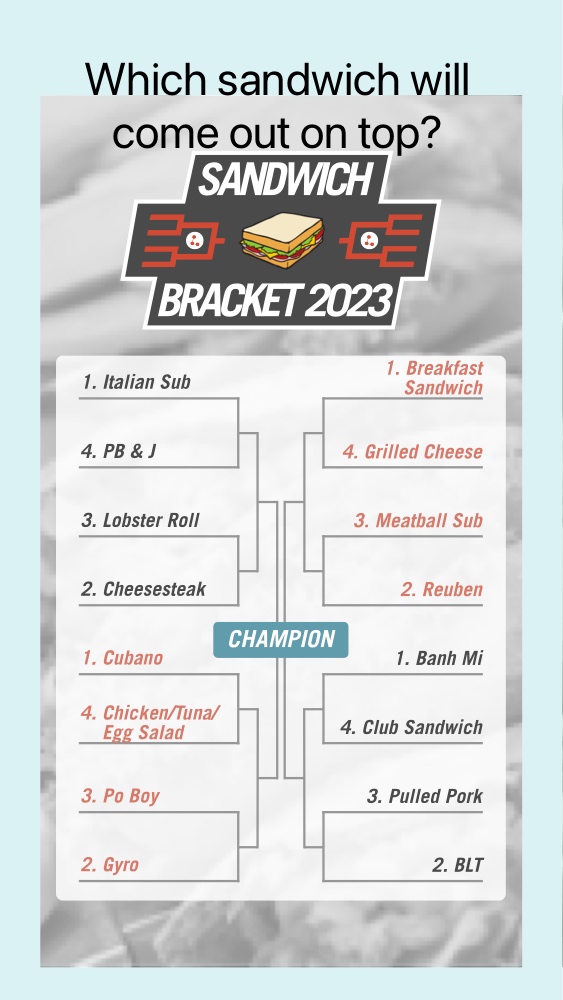
This month we concluded our 2023 Sandwich Bracket voting on Instagram, where the Bahn Mi reigned supreme! But…can we confidently say that the Bahn Mi is the best sandwich?

I’m always skeptical when someone bestows the title of “best” on anything. “Best” can be tricky to define. Is it based on sales, personal taste, sustainability, profitability, etc.? In our case, we wanted to know what a typical group of sandwich consumers thought.
The approach was straightforward: participants were asked to compare two sandwiches and choose their favorite. The results were then tallied and the sandwich with the most votes advanced while the other was eliminated. In sensory, this method is called the Paired Preference test.
There are a lot of advantages to using the Paired Preference test: it’s easy to perform, doesn’t require training, and provides simple and clear results. But by only putting two samples against each other, this method has some limitations. Let’s check out some examples and applications of the Paired Preference test.
Environmental Considerations
In 2023 the Gyro beat Cubano but lost to Cubano in 2020.
This happens in sports all the time. If the Dodgers beat the Padres in game one, it doesn’t mean they are destined to win the series. Like sports outcomes, results from the Paired Preference represent a snapshot in time and can change in different contexts. Geographical, seasonal, and sociological factors can all influence a test’s outcome.
This isn’t a weakness of the method, in fact, it can make your life easier. For example, if you’re a neighborhood pub, the most relevant population to survey is your neighborhood and there’s no need to survey people across the globe.
Scope
In 2020 the Gyro beat the Italian Sub, so what if the Bahn Mi faced the Gyro instead of the Italian Sub?
The Gyro and the Italian Sub are both strong sandwiches, but the Gyro never had the chance to face the Bahn Mi. Which raises the question: “What if the Gyro met the Bahn Mi in 2023?”. To answer this, we’d need to compare all sandwiches against each other. Which brings us to a limitation of the Paired Preference test…its scope.
While the Paired Preference is great at comparing two samples, there is no way to track changes in preference over time or compare multiple samples. I like to call methods that do this “database-able” meaning the data can build over time and be used as a comparison for future products. For example, the True-to-Target method is “database-able” because the individual sample results (Percent Defect) can be compared against all other samples in the database. QC programs are built on these “database-able” methods because they allow companies to catch changes over time and compare differences between all evaluated samples.
Applications
Because of the method’s simplicity it can be applied in many different scenarios. It’s commonly used in ad claims where products are compared with their competitors, or in verifying process changes. The method can also be modified slightly to inform specific product changes and/or troubleshoot issues (see 2-AFC).
The Paired Preference test can be a great tool to have in your flavor development toolbox.
DraughtLab offers practical and approachable Sensory Analysis Solutions that deliver real-world value to food and beverage companies. Visit our website or reach out to us at info@draughtlab.com to learn more!